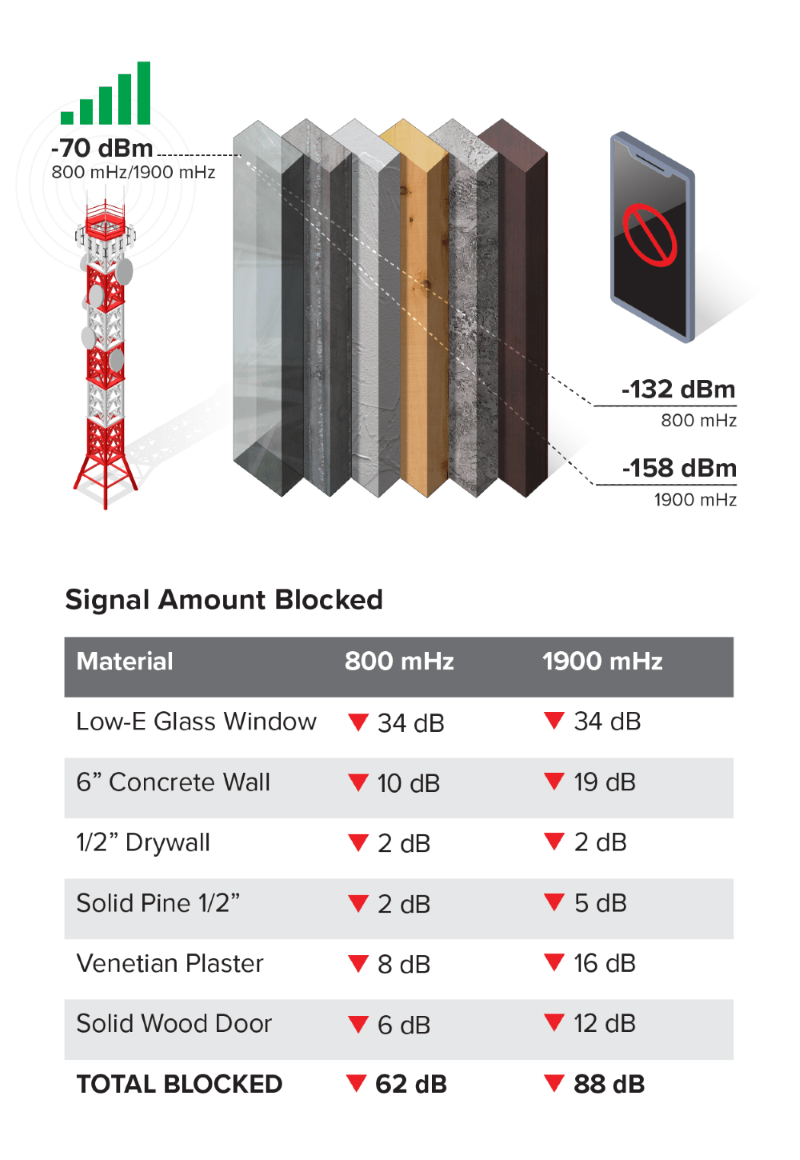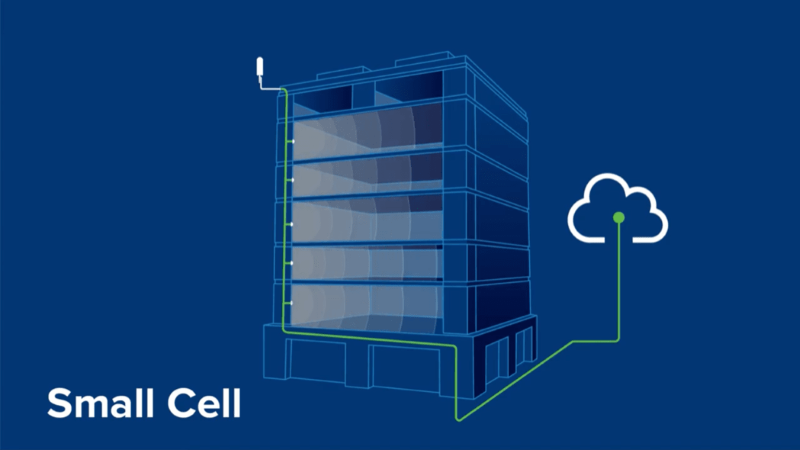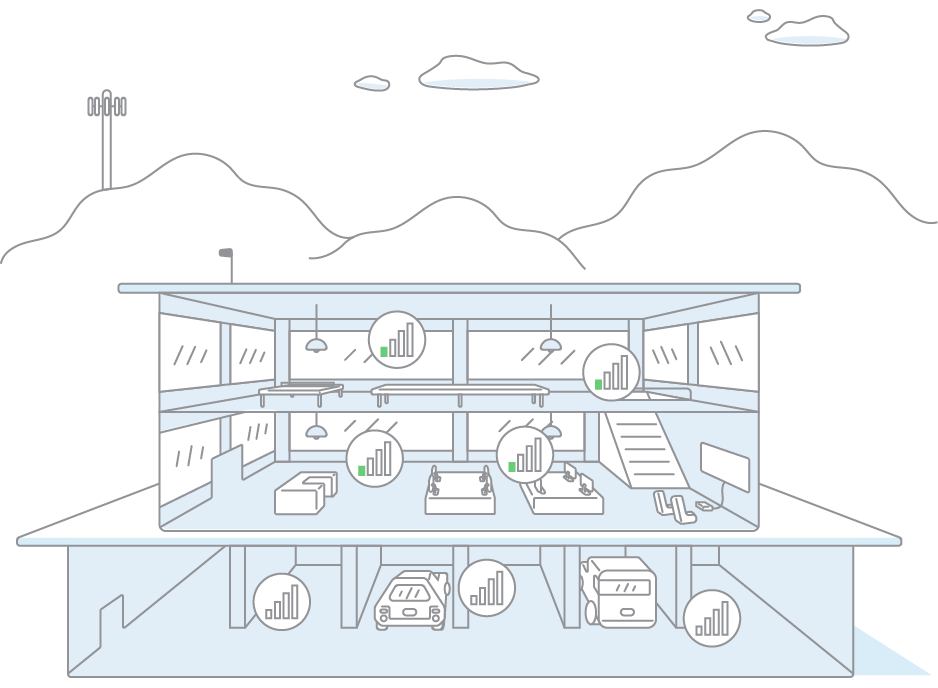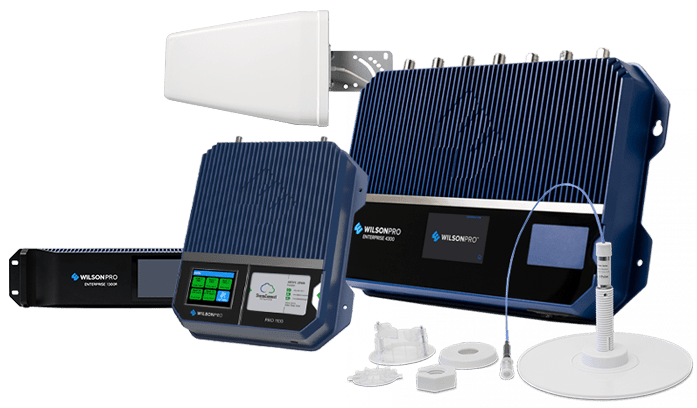Home


Resource Center
When you’re working in commercial real estate, one of the most important factors in improving property value and tenant retention is consistent cell signal.

There are a number of reasons for this. With the rise of 5G, wireless networks are on course to compete with the speeds provided by landline internet. Workplaces are increasingly working with bring-your-own-device (BYOD) standards for their employees, and mobile commerce is steadily increasing in importance.
Commercial tenants are reliant on 24/7 mobile connectivity to keep their teams coordinated, efficient, and in effective contact with the public. Providing solid in-building infrastructure for reliable cell phone signal is an important part of good tenant relations and a basic future-proofing measure. Here’s a look at cellular signal solutions for commercial real estate properties.
How Poor Cell Signal Happens

There are several factors that can interfere with cell signal at a commercial property. Let’s go over some of the most common offenders.
Plenty of Buildings Aren’t Built With Mobile Service in Mind
Whether they’re legacy buildings constructed for sturdiness with a lot of steel and concrete or modern buildings using energy-efficient “low-E” glass, commercial buildings often aren’t built to be friendly to cell signal. Building materials both traditional and new are a leading cause of interference and can heavily weaken signal strength.

Urban Density Can Make a Major Difference
Even if your particular building doesn’t interfere with cell signal too badly, its surrounding environment might. In a dense commercial district or office park, the profiles of neighboring buildings might lead to the materials used in their construction weakening your signal. Related problems can include heavy regional network traffic and electromagnetic (EM) interference from too many devices sharing your cell signal’s radio frequency band or using something close to it.
Cell Signal Infrastructure Still Has Gaps
5G is delivering a new standard in speed of data transfer and the near-elimination of lag. However, the infrastructure needed to support its extremely high-frequency signals (or mmWave signals) is still patchy and often involves unwieldy swarms of “miniature cell towers” called small cell networks. It’s very possible to find that a property has weak or nonexistent 5G signal even as the rollout goes into high gear.
4G signals are longer-range and have far wider distribution, even in remote areas. Even so, you can still find yourself in a dead zone where your cell tower is just far enough away for its signal to weaken substantially.
What Poor Reception Means for a Commercial Property

The effects of bad cell reception for a commercial client can be substantial. This is especially true given the growing dominance of mobile phones and other smart devices as an access point for the internet:
- Mobile devices are the source of 40% of online transactions.
- They account for almost half of online traffic worldwide.
- Mobile advertising accounts for more than 70% of U.S. digital ad spend.
- 63% of Google visits in the U.S. come from a mobile device.
Reliable mobile accessibility is very important for businesses to be agile and successful in this environment. It’s also crucial for the efficiency of the workplace itself.
- Almost 70% of U.S. employees use personal devices for work.
- Almost 60% of organizations have adopted bring-your-own-device (BYOD) as a standard.
- 87% of businesses depend on their workers using mobile business apps on their smartphone.
- BYOD employees put in an average of an extra two hours of work weekly.
BYOD improves productivity and provides a competitive advantage. That’s only true, though, if your indoor cell signal is dependable enough for it to work well.
.jpg)
If your commercial property lacks reliable signal, that impairs tenants’ ability to respond quickly to mobile commerce realities and opportunities. It also makes it harder for teams to coordinate with each other and work effectively, and it robs them of the added productivity that the growth of BYOD standards offers.
Ways of Compensating for Weak Cell Phone Signal
There are a few technologies that offer ways you can compensate for a lack of reliable mobile service. Each of them has its own strengths and weaknesses.
Small Cell

The small cell network is most commonly mentioned as a means of building the backbone infrastructure needed for 5G’s extremely high frequency signals. In that form, it involves clusters of thousands of what are essentially miniature cell towers, which act as base stations for cell signal. Those networks sync up with each other across a community or region, handing off 5G signal between each other.
Small cells can also be used as a means of extending a network inside a building. If you’re not able to get external signal in any other way, small cell can be a viable solution.
They come with drawbacks, however. Bringing enough small cells online to distribute signal throughout a commercial facility can involve a lot of setup and ongoing maintenance. Placement can involve administrative headaches from multiple permits and compliance with a variety of regulations. They’ll also work with only one carrier.
Active Distributed Antenna Systems (Active DAS)

Active DAS is a solution often employed in stadiums and other large-scale performance venues. Using fiber optics, it runs signal to various points at remote locations before it converts them to the radio waves that carry cell phone signal.
As you might imagine, this is a fast, effective, and extremely expensive solution. Typically difficult to install, an active DAS involves millions of dollars’ worth of investment and requires a lengthy FCC-administered carrier approval process.
Passive Distributed Antenna System (Passive DAS)

The most cost-efficient and reliable way of boosting cell signal is a passive DAS, also known as a cell signal booster.
First of all, it integrates smoothly with existing carrier signals. It’s functional with every network and with all U.S. carriers, including Verizon, AT&T, T-Mobile, and UScellular. That provides flexibility for tenants in their choice of mobile service.
Secondly, it doesn’t involve the ongoing costs and administrative headaches of small cell or involve the major capital expenditure of active DAS. The kind of passive DAS provided by WilsonPro and the certified experts of its partner companies is custom-designed for the client’s needs and timely, budget-friendly installation.
WilsonPro cell signal boosters capture an external cell signal, amplify it by up to 32 times, and use internal antennas to redistribute the signal in a commercial facility. The result is fewer dropped calls, better voice quality, uninterrupted texts, faster data speeds, improved audio and video streaming, and greater hotspot capability.
Provided there’s an external signal for it to amplify, passive DAS is the most affordable and reliable way to improve cell signal for properties in your commercial real estate portfolio.
Contact the Experts at WilsonPro Today

WilsonPro is already trusted by a host of recognized and trusted brands to provide dependable and effective passive DAS solutions, and the WilsonPro buyer’s guide provides more information about how the purchasing and installation process works.
Contact our expert staff today and discover the full possibilities of sophisticated cell signal booster technology in delivering the very best in mobile service for your commercial clients and tenants. We are happy to work with you to find the best way to deliver the peace of mind that comes with improved property value and future-proofed mobile network efficiency.

